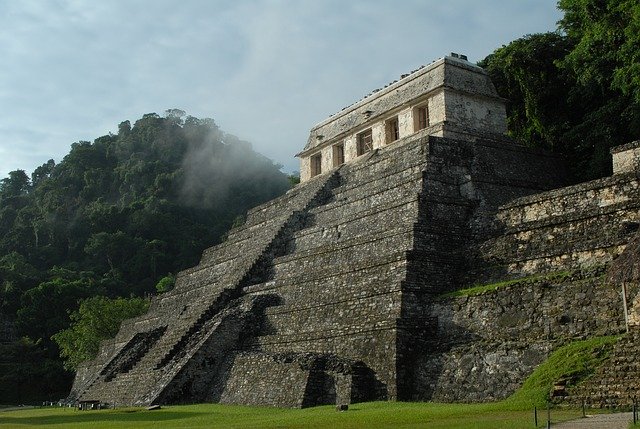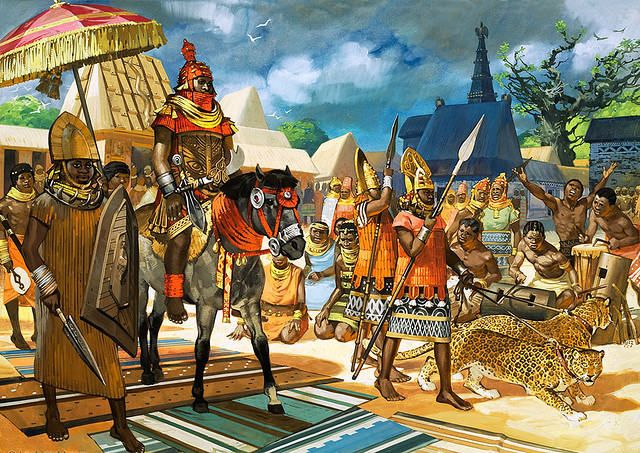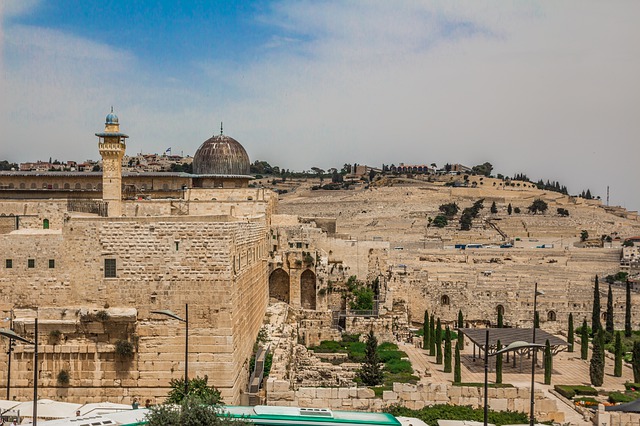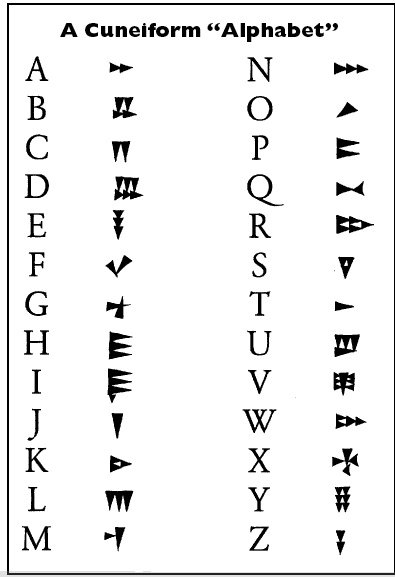Welcome to Ancient Peoples Study Week!
Learning Objectives:
|
To study a non-European society that provides contrasts with British history.
|
| To note connections, contrasts and trends over time. (changes in borders, evolving languages and writing). |
|
To develop the appropriate use of historical terms.
|
|
To answer and ask historically valid questions about change, cause, similarity and difference, and significance. (why it ended, how it is different).
|
|
To understand how our knowledge of the past is constructed from a range of sources.
|
Breadth of Study:
Choose from:
- Early Islamic civilization, including a study of Baghdad c. AD 900;
- Mayan civilization c. AD 900;
- The Kingdom of Benin (West Africa) c. AD 900-1300.
Look through the following resources, and of course, some of your own, and make a choice about which civilization you are going to study this week.
Session One – Making a choice.
Sometimes it’s tempting to go with the familiar or something you already know you are interested in and that’s absolutely fine. However, you should consider that there are amazing historical discoveries for you to make and some of them could be even more interesting than the areas you are already familiar with. Here are two sources for each of the ancient civilizations listed about. Spend a little time looking through these before making your decision. Of course there will always be opportunities to go back and study the ones that you didn’t choose later.
Mayan Civilization
The Maya civilization was a Mesoamerican civilization developed by the Maya peoples, and noted for its highly developed writing system in pre-Columbian Americas—as well as for its art, architecture, mathematics, calendar, and astronomical system.
The overarching term “Maya” is a modern collective term that refers to the peoples of the region, however, the term was not used by the indigenous populations themselves since there never was a common sense of identity or political unity among the distinct populations.
Note: Mesoamerica is a historical region and cultural area in North America. It extends from approximately central Mexico through Belize, Guatemala, El Salvador, Honduras, Nicaragua, and northern Costa Rica, and within this region pre-Columbian societies flourished before the Spanish colonization of the Americas.
The Kingdom of Benin
The Kingdom of Benin, also known as the Benin Kingdom, was a pre-colonial kingdom in what is now southern Nigeria. It is not to be confused with Benin, the post-colonial nation state. The Kingdom of Benin’s capital was Edo, now known as Benin City in Edo state. The Benin Kingdom was “one of the oldest and most highly developed states in the coastal hinterland of West Africa, dating perhaps to the eleventh century CE”,until it was annexed by the British Empire in 1897.
Edo, also called Bini (Benin), is a Volta–Niger language spoken in Edo State, Nigeria. It is the primary native language of the Edo people and was the primary language of the Benin Empire.
Note: Pre-colonial Africa refers region before foreign countries arrived and expanded into the African countries. The principal powers involved are Britain, France, Germany, Portugal, and Italy. A colonising country seeks to benefit from the colonised country or land mass. In the process, colonisers may impose their religion, economics, and medicinal practices on the natives. Colonialism is the relationship of domination of indigenous peoples by foreign invaders.
Early Islamic Civilization
FactMonster Golden Age of Islam
The Islamic Golden Age was a period of cultural, economic and scientific flourishing in the history of Islam, traditionally dated from the 8th century to the 14th century. Scholars from various parts of the world with different cultural backgrounds gathered and translated all of the world’s classical knowledge into Arabic and Persian.
Note: Persian (also known as Farsi) is the language of the oldest known text. Examples of Old Persian have been found in what is now Iran, Romania, Armenia, Bahrain, Iraq, Turkey and Egypt.
Persia is the ancient and official name of Iran.
Session Two – Project Preparation
For this study you will need to create a project. This can be digital or non-digital.
- Decide on your ancient civilization
- Create a cover for your project (digital or non-digital)
- Start a resource list. You should copy-paste or write down each and every source you use.
For each area of the study you should produce a piece of work or a record of what you discovered. Sometimes it will be suggested what you produce as evidence and sometimes it is entirely up to you. These evidences can include items such as:
- written explanations
- photos of activities
- videos
- maps
- stop-motion
- diagrams
- time-lines
- photos of artifacts
- scans
- drawings
- art work
- models
- presentations (Powerpoint / Open Office / Prezzi)
Things you might need:
- camera
- modeling clay / other craft items
- printer
- paper
- card
- scissors
- glue
- sticky labels
- ruler
- colours
Note: A digital option can be to create a blog post and include all your evidence on that post, much like this post.
Session Three – Location
Research the area of the world in which your civilization existed.
Task
You need to produce a map which shows the geographical region where your ancient civilization existed. The countries and borders may have been very different then. Identify the region and add labels to show important information such as changes to country names, population sizes, migration etc…
Shows correct geographical region (40 points)
Map is labeled to show the civilization being studied (10 points)
Shows approximate population (30 points)
Shows population growth / change (10 points)
Give an ancient name of the region or part of the region (10 points)
Final grade /100
Useful resources:
For a colour map which you can zoom into and then print: National Geographic Mapmaker
You could zoom in and screen shot on Google Earth or Google Maps.
For PDF outline maps: Education Place
For more outline maps: World Atlas (There is also a country map search on the menu under countries which may give you more of a selection of maps.)
You can also create a new Google -My Maps from Google Drive.
Session Four – Timeline
Identify the approximate dates in which your civilization existed. Not all sources will agree and in ancient civilizations the time scales can be very broad.
Task
You need to produce a timeline which shows the approximate start of the civilization and when it ended. It should identify important dates such as kings / leaders being elected, births and deaths of scholars, and dates of natural disasters or wars.
A timeline is a way to show events chronologically, or in order of earliest to latest. Here are some examples of timelines.
Has the structure of a timeline (30 points)
Timeline is labeled to show the civilization being studied (10 points)
Beginning date roughly accurate (10 points)
End date roughly accurate (10 points)
Important events identified (up to 30 points)
Chronologically ordered (10 points)
Final grade /100
Useful resources:
Islamic timeline here.
Timeline software to make a digital timeline (which can be printed) is here. Type in your name and the title. Click start and save your timeline on your computer. Save it regularly, after each new item is added.
A nice simple timeline maker which can be printed is here.
Alternatively a timeline can be easily made using paper and card:
Here’s a complicated one.
Here’s a slightly less complicated one.
Here’s a really easy one.
Do it however you want.
Session Five – Language
Research the language used in your civilization. Language includes both spoken and written communication.
Task
You need identify the spoken and written language of your civilization. Show this in any form you wish.
Identifies spoken language (40 points)
Identifies written form of language (40 points)
Shows an example of the written language (for example own name or a drawn symbol for an everyday object) (20 points)
Final grade /100
Useful resources:
Edo language of Benin here and here.
Cuneiform of the Middle East here and here.
Mayan languages here and here and here.
Session Six – Art and Architecture
‘Great Benin, where the King resides, is larger than Lisbon, all the streets run straight and as far as the eyes can see. The houses are large, especially that of the king which is richly decorated and has Fine columns. The city is wealthy and industrious. It is so well governed that theft is unknown and the people live in such Security that they have no door to their houses’. The captain of a Portuguese ship, Lourenco Pinto.
Identify examples of the architecture of your chosen ancient civilization.
Identify examples of the art of your chosen ancient civilization.
Task
- Create a visual ideas board with examples of the art and architecture of your ancient civilization. You can do this by cutting and pasting, presentation software, or any other appropriate means. The board could contain photos, pictures, sketches, and descriptions that together will present a strong visual image of your ancient civilization. Here are some examples of ideas boards.
- Create a sketch / painting/ model/music sample which represents your chosen ancient civilization.
Identifies architectural style or an example (30 points)
Identifies example of visual art or music (30 points)
Creates own art (music, visual art, built) ‘in the style of’ (40 points)
Final grade /100
Useful resources:
Mayan
Examples of Mayan architecture here.
Examples of Mayan art here.
Ancient Mayan (Aztec) music here.
Islamic
Examples of Ancient Islamic architecture here.
Examples of Ancient Islamic art here.
Ancient Islamic (Irabian) music here.
Benin
Examples of Kingdom of Benin architecture here.
Examples of Kingdom of Benin art here.
Tradition Benin (West African) music here.
Session Seven – Food and Drink
Much or the food we eat today was gathered, harvested, and cultured a long time ago. You need to find out about these ancient foods and think about whether we still eat them today and if so, how have they changed if at all.
Task
- List some traditional foods (fruits / vegetables / grains/ meats) that were grown or gathered inyour chosen ancient civilization.
- Research a traditional food or drink for your culture that you will make. Write down the name of the ‘dish’ and list the ingredients / recipe/ method. It can be an actual recipe from the ancient civilisation or it could be a modern dish using traditional ingredients.
We will be making the chosen dishes together. Take photos!
Lists traditional foods (20 points)
Identifies a traditional food dish or drinks (10 points)
Clearly notates the recipe / ingredients / method (20 points)
Recreates a sample of a traditional food or drink (40 points)
Photo evidence (10 points)
Final grade /100
Useful resources:
Ancient Mayan Food here.
Ancient Islamic recipes – The Meals of Muhammed here.
Traditional recipes of the Edo People here.
Session Eight – Wrap Up!
Collate your evidence.
If your project is non-digital you need to put it all together using a folder, staples, or some other format so that it is in order and clearly labelled and easy to understand and follow for someone who doesn’t know the subject.
If your project is digital (such as a blog post) you need to make sure that non-digital evidence is scanned in and included, and that it is linear and easy to follow for someone who doesn’t know the subject.
Design 5 questions that are based on your evidence to quiz someone who has read through your project, to test them (and you) on the content of your project. Add these questions to the end of your project.
Cover / Main page (10 points)
Ordered by task (20 points)
Clearly labelled and easy to follow (20 points)
Neatly presented (20 points)
5 questions (20 points)
Innovative (10 points)
Final grade /100
Assessment Matrix.
(you can use this as a checklist).
Print this out and put it with your project.



